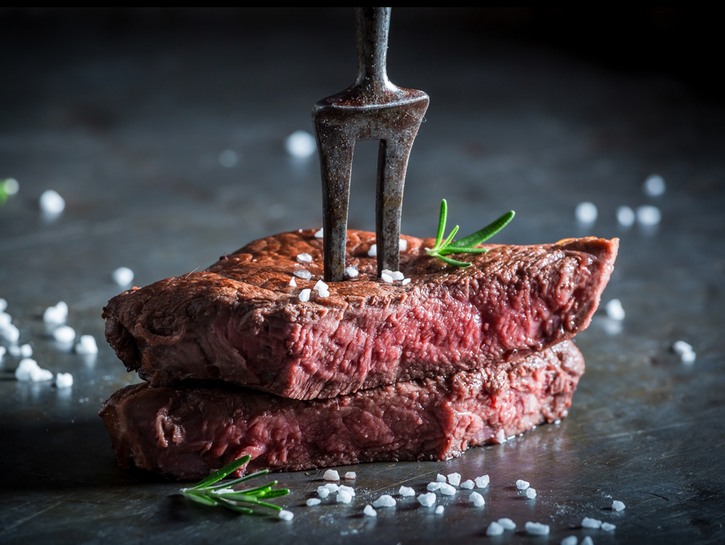You’ve found yourself at a steakhouse for the first time with some friends. Assaulted by all the choices, the Filet Mignon (Tenderloin Filet), the New York, the Ribeye, the T-Bone, The Porterhouse, you pause. The waiter taps his pen on his notepad. You decide on the Filet Mignon, and close the menu, considering your work to be finished. Suddenly the waiter asks, “And how would you like your steak done?” You panic, completely unprepared for this many decisions.
You glance over at your friends, they all say “Medium-rare.”
This has always been a hotly debated, table-flipping, friendship-ruining issue. How to take your steak. Medium-rare is most popular because it not only cooks the meat but hits that sweet spot where the fat begins to melt and spread juices throughout. But no matter how you like your steak, you’ve come here because you want to know how to cook a medium-rare steak for yourself, someone you love, or just to prove you can. Take that, Kevin. So let’s dive into what makes the perfect medium-rare steak.

The different degrees of steak. Sudowoodo/Shutterstock
As a rule, whether you’re pan-frying or grilling your steak, the longer you keep steak on the grill the drier and tougher it gets. So no matter how you like your steak, it’s best if you start with a fresh steak, or if frozen make sure it’s thawed out. Otherwise, you’ll end up with a seared exterior and a cold middle. And no one wants a cold center. The internal temperature for a medium-rare steak, its main defining factor, is between 130 – 140 degrees Fahrenheit. Heat your grill or pan to high-heat and you’re ready to get started.
Season the steak how you like before plopping it on! Salt and pepper, even butter create a carmelized and delicious exterior. The ideal medium-rare steak is properly seared on the outside, the inside mostly pink with a little bit of red in the center. To achieve medium-rare, total cook time depends on the grill or pan but generally, a total of 3-5 minutes per side for a 1-inch steak does the trick. Be sure to flip the steak every minute so that it’s cooked evenly and keep track of total time.
Once it’s on, be sure to handle the steak with tongs. Never a fork. Seriously, put that fork away. Contrary to what some might know, you never want to pierce the steak while it’s cooking. Piercing the steak while it’s cooking releases the juices key for tenderness and flavor.
If you’re starting out, feel free to use a meat thermometer to check the level of doneness. Just be sure to check near the end to avoid piercing the steak more than once. Put the thermometer straight into the middle of the steak, never all the way through. Remember, the internal temperature for medium-rare is between 130 – 140 degrees Fahrenheit. The expert method is to use the tongs to test the level of doneness or even to use your finger. The surface should feel firm but if you push down, the meat should spring back. If the surface feels mushy and soft, too soon. Leave it on. If the steak doesn’t give at all, that’s cooked medium or above so take it off!
Once you take your steak off the pan or grill, make sure to rest it on the plate for the appropriate amount of time. Nap time is very important. Typically this is about half the amount of time it took to cook the steak. Resting lets the meat, fat, and juices redistribute thoroughly throughout the steak. After resting, it’s time to cut into that juicy, mouth-watering slab of love and enjoy. If it’s not done exactly right, that might be due to your grill or pan. Take note and adjust accordingly next time. As with anything, masterful steaks take time and some trial and error. And now if you’ll excuse us, we’re starving and it’s steak night.

Shalith/Shutterstock
